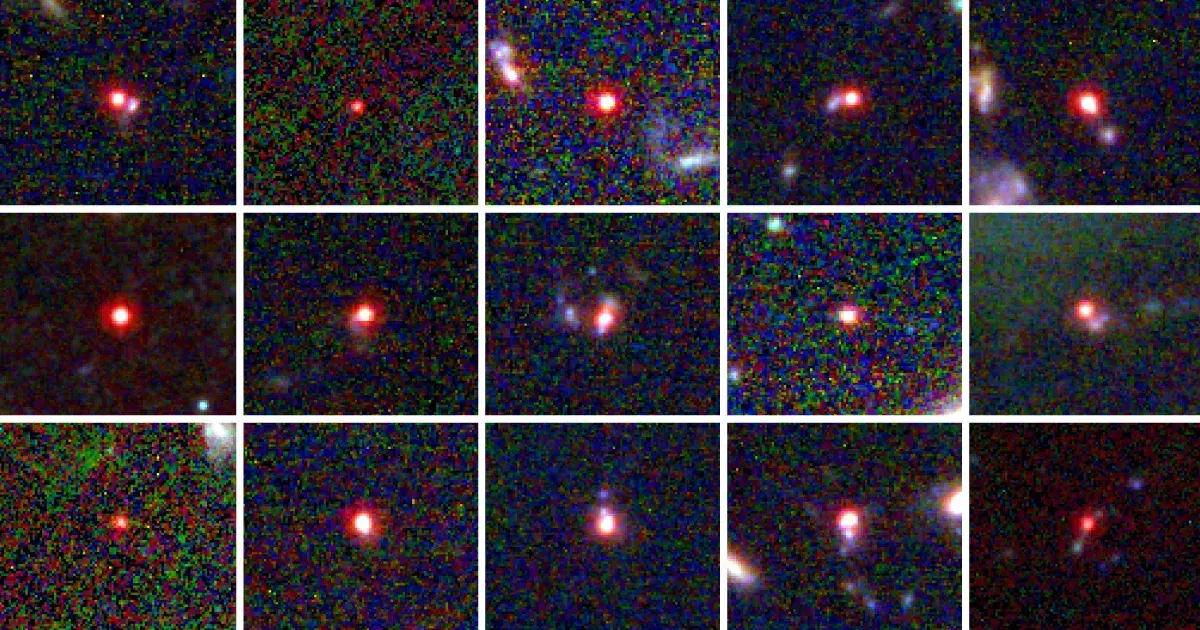Observations from the James Webb Space Telescope have revealed a surprising number of young galaxies containing massive black holes at their centers, churning up the gas within only a few hundred million years after the Big Bang. Spectroscopic data indicates that these “hidden little monsters” harbor black holes weighing millions of solar masses. The abundance of growing baby black holes challenges theories about how supermassive black holes could have formed so early in the universe’s history. While astrophysicists expected JWST to find some early black holes, the sheer number uncovered has shocked astronomers and could rewrite models of galaxy and black hole formation. If confirmed, these observations suggest that massive black holes may have grown much faster than previously believed possible in the infant universe.



Does anyone know why exactly we’ve ruled out these being primordial?
Cosmic microwave background (CMB) is very smooth ; if there was black holes in there I guess we would see (huge) unevenness.
Hummm, or at least, that stupid LCDM would lead to such an expectation. … that model also put CMB at :
400 000 to 500 000 years after the BBang.
and most distant visible galaxies (and black holes) at :
330 000 000 years after BB.
if we go by this number we have a few hundred million years to produce such big things out of something very smooth.
if we used a different model we could have much more time.
Here’s an interesting adjacent paper. The size of black holes formed is (obviously, in hindsight) limited by the cosmological horizon in a standard big bang model, so they would have to form late. Late enough to conflict with CMB measurements, and the authors have to introduce a weird distribution of spacial curvature to compensate.
Yeah, LCDM isn’t looking so hot these day. I wonder who’s looked at singularity-free theories that might allow a sizeable black hole to already exist before inflation.